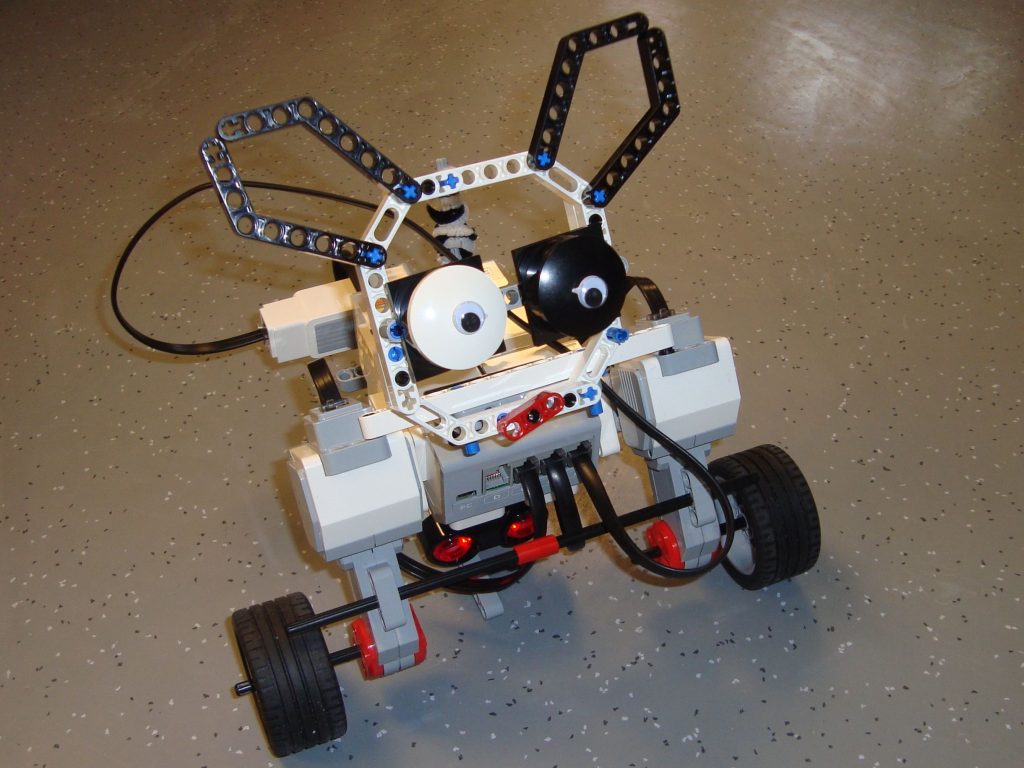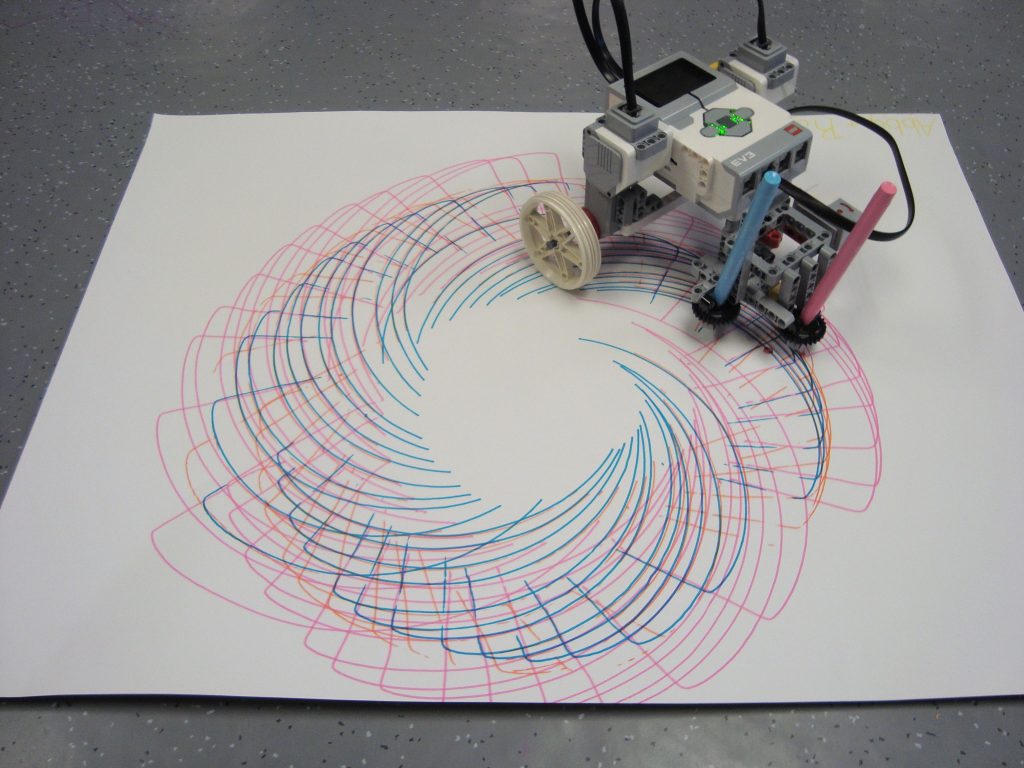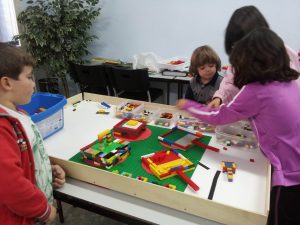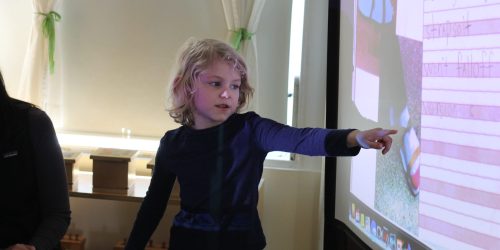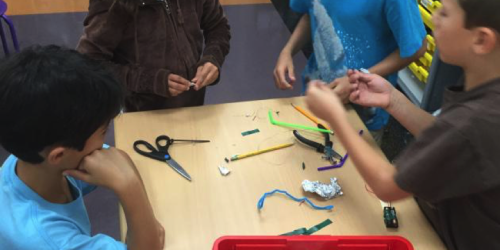by Barbara Bratzel
Educators are asked to teach many different things these days, above and beyond their usual subject matter. Technological literacy. Project-based curriculum. Soft skills such as collaboration, communication, and resilience.
Ideally, these topics reinforce each other and excite kids about learning. In real life, day to day, teachers can find juggling them overwhelming and stressful. Teachers find many different ways of addressing these competing demands. My approach: LEGO.
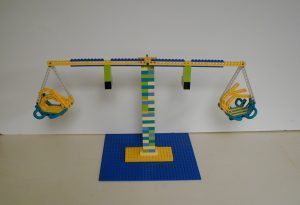
LEGO is familiar to kids as a toy, but it is also a powerful tool for engineering.
It can be used to teach basic ideas: Build a sturdy wall. In trying to build a wall that does not break when dropped, the students discover that staggering the joints between bricks makes a wall sturdier.
It can be used for more advanced lessons as well: Build a LEGO pan balance accurate to within half a gram. In constructing a successful balance, the students must grapple with ideas about precision of measurement, center of gravity, and torque.
And, of course, LEGO can be used to teach programming and robotics: Use a gyro sensor to program a robotic car to draw spirograph-like designs. Program a proportional controller to make a robotic puppy follow you at a specified distance.
LEGO is also a powerful tool for creativity: In my school, we have used LEGO WeDo with first graders to invent new kitchen gadgets, LEGO bricks with fourth graders to reenact Greek myths, and MINDSTORMS EV3 with eighth graders to create gumball machines.
How does a teacher get started using LEGO in the classroom? LEGOengineering.com is an invaluable resource for teachers at all levels of experience. It offers curriculum, advice, and inspiration for all aspects of using LEGO for engineering. In particular, the site has a wealth of support for LEGO robotics.
Another great source for inspiration are the LEGO books by Yoshihito Isogawa. He has written three Technic idea books and one MINDSTORMS idea book, all of them full of wonderful mechanisms to build. Teachers in search of project ideas should also check out the two Dr. E sites, Dr. E’s MINDSTORMS Challenges and Dr. E’s WeDo Challenges. Each site presents a monthly open-ended challenge, such as making a robotic pet or a burglar alarm. Children from around the world build solutions using MINDSTORMS or WeDo and share videos of their creations on the websites.
How does a teacher manage a classroom full of students doing engineering projects? I have found that setting ground rules makes a huge difference in the tone of the classroom. Here are the ones I use:
Project Rules
We will be doing projects, both large and small, throughout the year. Sometimes your attempt will be a success. Other times, it will be a miserable failure. Either result is okay—failure is an integral part of the design process. What is not okay: laughing at someone else’s project.
So, some rules for working in the class:
-You may not criticize or make fun of another student’s work. This includes laughing, teasing, or comparisons (“My car is so much better than your car….”).
-However, you may provide CONSTRUCTIVE criticism. To be constructive, the comment must be specific and offer a possible solution. For example, “Hey your car doesn’t go straight” is not acceptable, but “I noticed that your car veers to the left. It looks like the back wheel is rubbing against the frame” is welcomed.
-No designs are private property. Anyone may get ideas from any other design. If someone copies a piece of your design, the proper reaction is to be flattered—clearly, the other person has recognized your brilliance.
-If you get stuck, feel free to look at other people’s designs to see how they have solved similar problems.
-And finally, relax! Things will go wrong—but you will have plenty of time and assistance to fix the problems.

